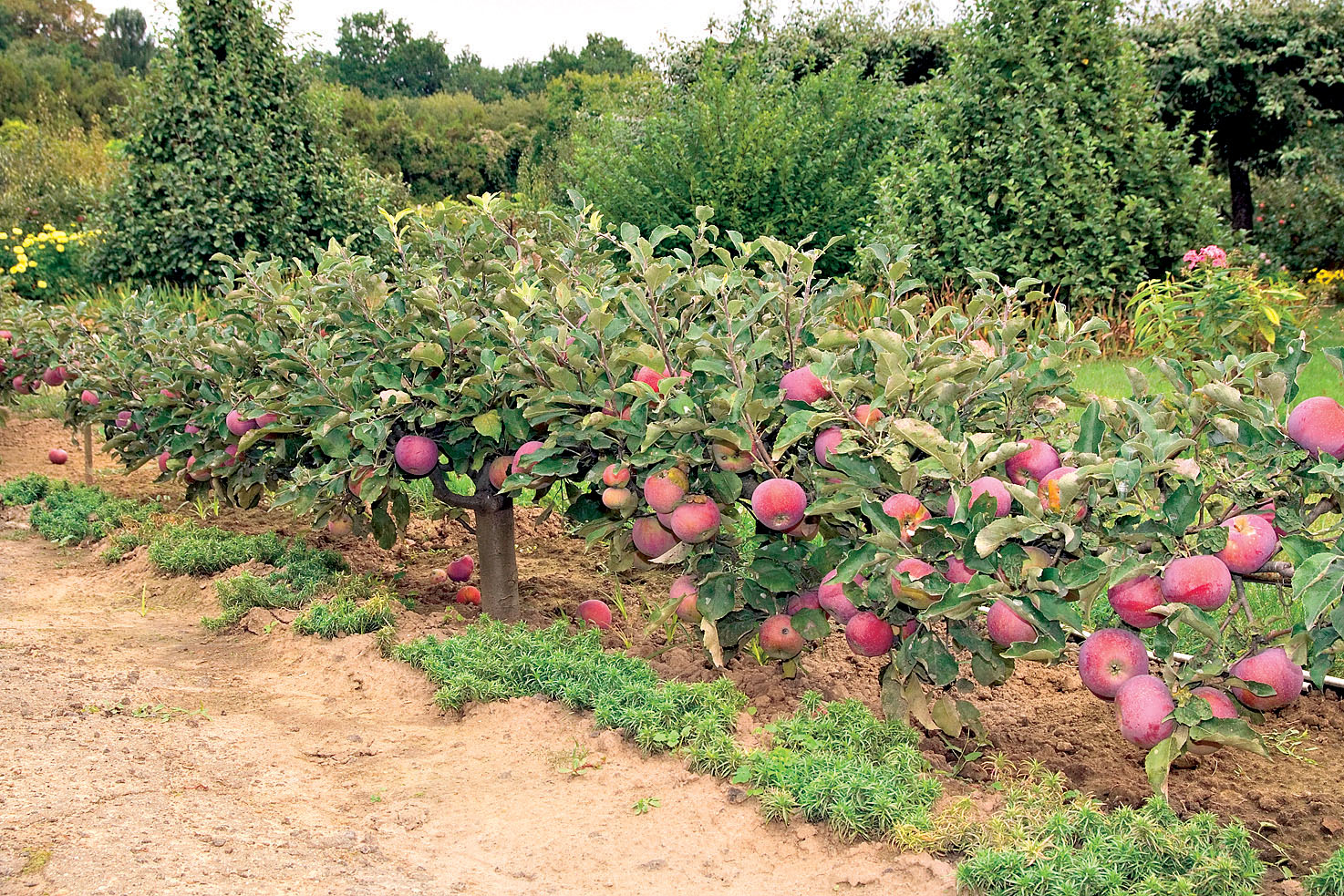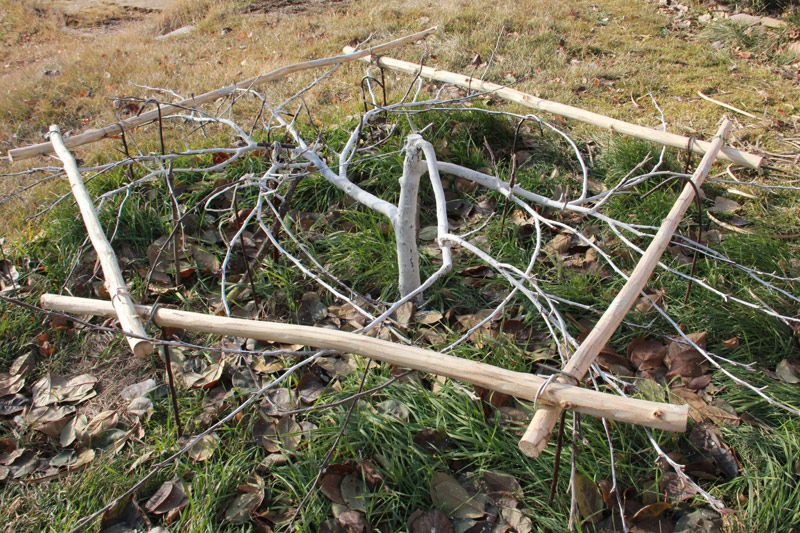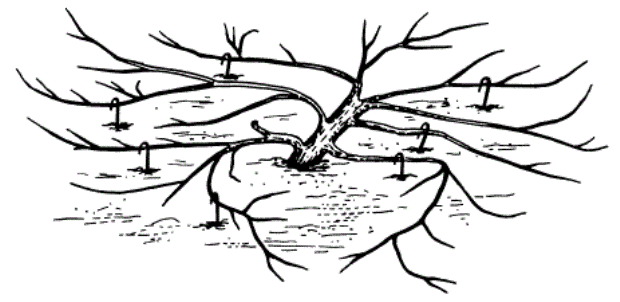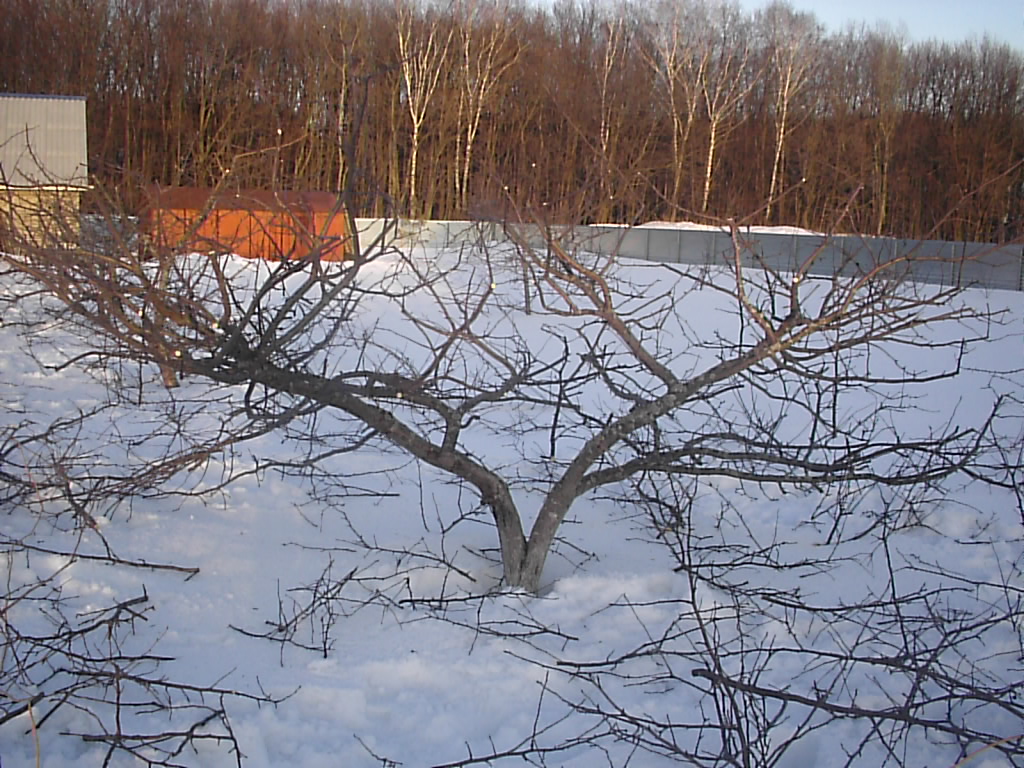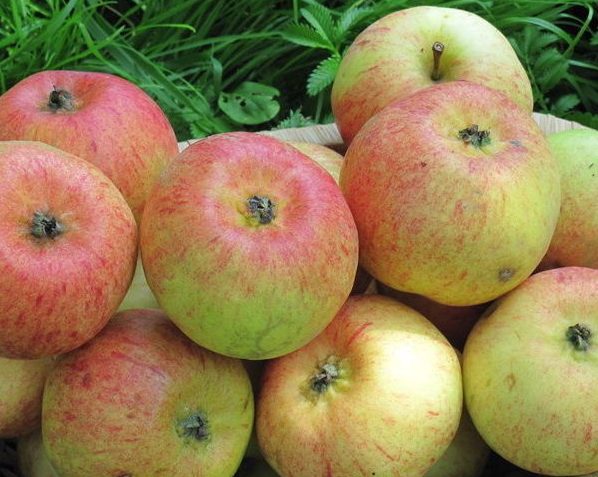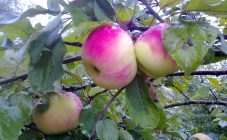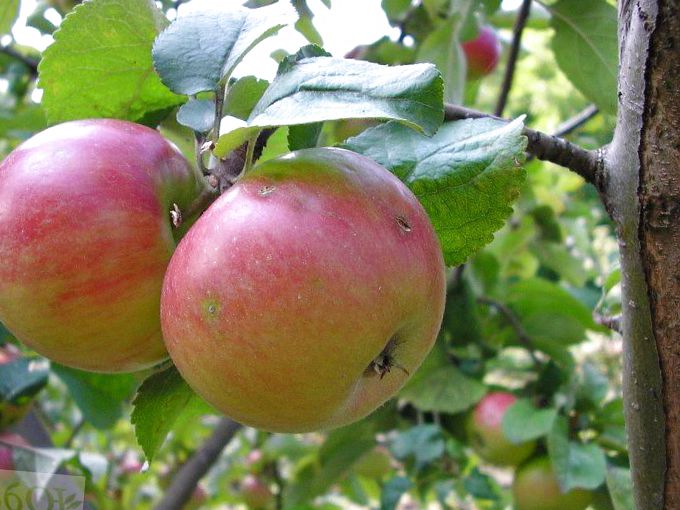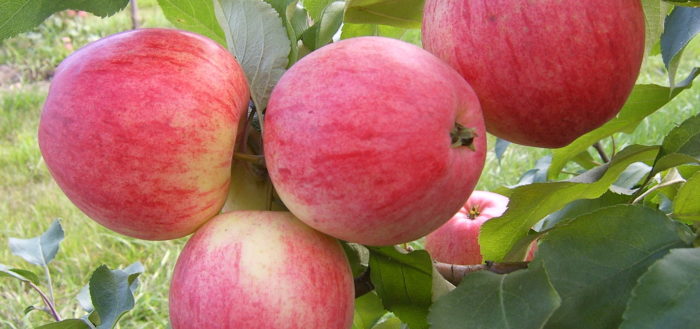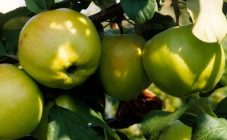Content:
The harsh Siberian climate requires gardeners to go to great lengths and work hard to get a good harvest. Ordinary tall and large-fruited apple trees often freeze out in cold winters and during spring frosts, and local varieties yield a harvest from small apples that do not differ in either their presentation or special taste. It is not surprising that it was the gardeners of these regions who first tried to grow shale apple trees.
Description
The creeping apple tree (also called stanza) is a specially shaped dwarf tree. In this form, it takes up quite a lot of space - much more than ordinary apple trees, but the harsh winter is not much better tolerated. As the name implies, such a tree is usually short (up to 45-50 cm in height), its branches are parallel to the ground, and do not grow up.
There are apple varieties that naturally possess this type of crown, for example, Melba or Borovinka. But if you wish, you can grow any sort of apple trees in the form of a stanza: summer, autumn, winter, large, or small-fruited. To do this, you just need to correctly and timely form its crown, and then provide the tree with proper care.
Low growth makes it possible to easily cover the tree for the winter. This increases the survival rate of plantings, and as a result, the overall yield of the garden. The first fruits from stale apple trees can be obtained already for 3-4 years, observing agricultural technology.
Planting a creeping apple tree
Any variety of apple trees is suitable for growing in the form of a stanza, but it is better to choose those that are large in size and excellent fruit taste. At the same time, you should not choose southern varieties, since they are much less adapted to local conditions and even in the form of stanza may not survive the cold winter. It is better to choose a suitable variety from those that were bred for the northern regions. The best results can be achieved on a rootstock made from local wild game with high winter hardiness. The graft can be of any kind.
Preparing for landing
Since the stale form of the apple tree takes up a fairly large space, you need to think over the layout of the garden in advance and choose the most suitable place for the trees. It must be protected from strong winds and drafts. In addition, it is better to choose the driest place on the site, since apple trees do not like high humidity, and close-lying groundwater can cause root rot.
You can plant apple trees both in spring and autumn.In the first case, the formation of the crown continues during the summer, in the second - the branches of the tree are tilted to the ground and "pinned" in the right places with wooden or metal hooks or hairpins. Then they cover for the winter, in the spring, after removing the shelter, the seedlings are allowed to grow freely.
Landing takes place in the classic way (vertically) or at an angle of 40 degrees. If the soil is dry, a slight deepening of the root collar is allowed. In high humidity, this can lead to rotting of the tree.
After planting, the seedlings are watered at the rate of 2-3 buckets for each. Then it is recommended to mulch the ground with peat, humus or other available material. This will protect the soil from drying out and the roots from frost.
Caring for stanza apple trees
Having found out what stanza apple trees are, it's time to deal with the intricacies of care. Top dressing and watering are carried out similarly to ordinary apple varieties, but the peculiarities of formation and pruning will require more careful study.
Crown formation
Saplings of autumn planting after release in spring are allowed to grow freely, until about June. It is necessary to ensure that the branches do not become woody, otherwise they may break when fastened. In June, the branches are again bent to the ground, making sure that at least 5 cm remains to the soil. In August, the tops of all branches are pinched to stop their growth and stimulate the lignification of the bark.
If the planting was carried out in the spring and at an angle, the seedlings also grow freely until the beginning of summer. If desired, in the spring, you can trim the trunk one third for more abundant branching, but this procedure is not necessary. In summer, the branches begin to form: holding the trunk near the grafting site, it is carefully tilted to the ground, and then fixed in this position.
In the spring, vertically planted seedlings are cut to 4-5 buds, and the creeping crown is formed from growing young branches. They are fixed horizontally with hooks or staples, making sure that the branches do not touch the ground and are aligned.
The crown can be formed in the form of a plate: by fixing the branches evenly in a circle or in the form of two shoulders. In the second case, the tree has two main "arms" -branches, located opposite each other, and 4-5 branches on each of them (at a distance of 0.3-0.4 m).
To maintain the apple tree in a creeping form, it is important to bend all new, upwardly growing shoots to the ground in a timely manner and fix them with hairpins until lignification.
It is very important to carry out pruning in a timely manner, since the thickening of the crown greatly affects the yield of the apple tree, and the elite is prone to rapid overgrowing. If the tree is not properly cared for, excessive crown density can lead to various problems:
- the development of diseases and the spread of pests;
- later fruiting;
- crushing of fruits and deterioration of their taste;
- less intense color of apples.
Preparation for wintering stanza apple tree
Otherwise, caring for a creeping apple tree is easy even for novice gardeners. The tree needs weeding and removal of root growth. To get rid of the grass, you can mulch the root circle with peat, humus, or other available material.
To prepare the apple trees for winter, it is necessary to carry out a set of measures. A layer of earth or mulch, up to 8-10 cm in height, is poured onto the trunks to insulate them and prevent freezing. With the onset of heat, the insulation must be removed, as it provokes the growth of the shoots.
Various materials are used for the main cover of the crown:
- spruce branches;
- dry foliage;
- snow;
- priming;
- insulating materials.
In order to prevent rodents from getting under the shelter, you must either place traps with poison around the tree, or wait until the tree is covered with snow and only then cover it with insulation on top.
It is also recommended to whitewash the apple tree trunks before sheltering to avoid sunburn after removing the insulation. In addition, whitewashing will help protect the tree from many pests. Since the branches of the stale apple tree are located close to the ground, it is necessary to whitewash not only the trunk, but also the lower branches.
Siberia is characterized by frequent return frosts, therefore, it is necessary to remove the shelter in spring with extreme caution. You should not rush too much with this, although you cannot delay it. It is best to remove the insulation gradually, giving the trees the opportunity to get used to the air temperature.
Experienced gardening tips
To make it a little easier to care for a dwarf garden, you can use the advice of experienced Siberian gardeners:
- In the first few years, with intense flowering and fruit setting, it is recommended to thin out the ovaries. This will remove the load from the apple tree and allow it to be used for its own development and strengthening. If the gardener gives the tree time to grow stronger, it will certainly please it with a rich harvest a little later;
- Under the weight of ripening apples, tree branches can bend to the ground. This can cause the fruit to rot or spoil by rodents. To avoid this, it is necessary to use props, trellis or cover the ground with foil. Harvested fully ripe, each apple must be stalked. Ripe fruits are easily separated from the branch and allow not to damage the fruit buds of the next year;
- Shale apple trees also need fertilization. For them, the standard feeding scheme for upright apple trees and the same concentration of fertilizers are quite suitable.
After reading the description and care recommendations, it may seem that growing a stanza apple tree is a very difficult process. Of course, this type of tree requires a little more effort and time, but gardening in the northern regions has always been difficult, because you cannot just plant a tree there and start harvesting it. But it is the stale tree shape that is designed to greatly facilitate the gardener's business and help him grow a strong and abundantly fruitful garden.
